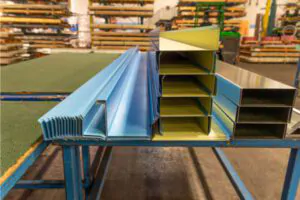
Are you thinking about having a roof replacement soon? Then maybe you are experiencing problems with the water that gets into your roof when it’s raining. Aside from the sheet-like material you see on top of your house, its part that is called roof flashing plays an important role in keeping your home safe and dry all the time.
Roof flashing is one part of the roof that many homeowners do not know about and often neglect. This material is what we place in the cracks and spaces in the roof to prevent water from entering. It is made of thin material which is placed underneath the shingles to direct water in another direction away from your roof. As a homeowner, it is necessary to make yourself aware of roof flashing and its different types.
Types of Roof Flashing
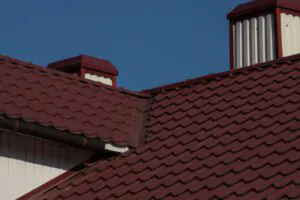
1. Continuous Flashing
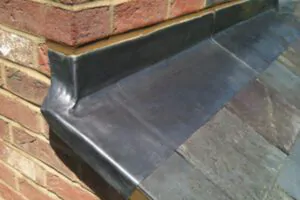
It is also called an “apron flashing” because of its resemblance to an apron. Continuous flashing is a long, single metal that is spread downward to direct water to the shingles waiting underneath. During the changing seasons, a home contracts or expands. This long continuous flashing has the tendency to warp and crack.
2. Base Flashing
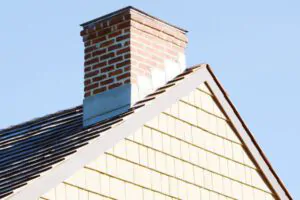
Water is prevented from reaching the roof deck using this type of roof flashing. Base flashing is placed at a joint between a wall and the roof surface for complete protection during heavy rain. This is often made of metals like copper and aluminum.
3. Counter Flashing
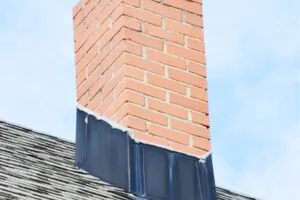
This type of flashing is intended to prevent moisture from getting into the sidewall flashing or behind the vertical flange. A counter flashing is often made of galvanized steel and is placed on the chimney.
4. Step Flashing
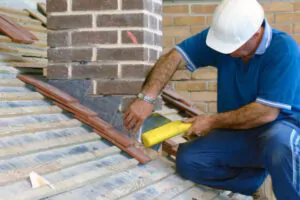
The flashing that keeps the walls of your house dry is called step flashing. It’s a rectangular flashing that is bent in the middle and will be placed on several layers to ensure that no drop of water will get away near the walls of your home.
5. Skylight Flashing
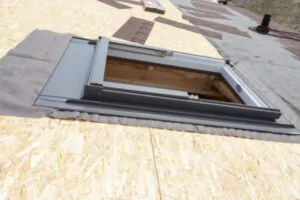
Literally, this is the type of flashing that is attached around the skylight of your roof. Skylights and skylight flashing are the ones that protect your home from extreme weather conditions such as snow and storm. This creates a seamless, clean look for being attached to your windows or skylight.
6. Kick-out Flashing
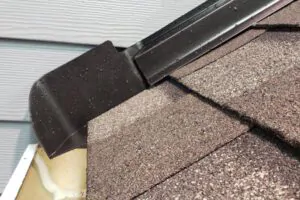
From the name itself, kick-out flashing is used to kick away the rainwater on your roof and bring back the good condition of your roof. During a heavy rain, it directs the water from your roof to the gutter of your home.
Importance of Roof Flashing
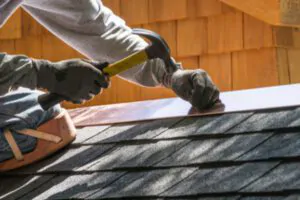
Without a properly installed flashing on your roof, its vulnerable parts may be penetrated easily with water. Roof flashing provides areas in the roof that are prone to leaks and water damage with the right protection. In areas of your roof that need a better shield from the rainwater, roof flashing is installed. This can be between the skylight perimeters and the chimney, along with other places. By having good quality roof flashing, maintaining roofs in perfect shape for many years is possible.
Frequently Ask Questions
What kind of roof flashing do I need?
The type of roof flashing you need depends on the areas of your roof that are most susceptible to water damage. For general roof edges, continuous flashing is a solid choice, while step flashing is effective for walls. Skylight flashing is necessary for roofs with skylights, and kick-out flashing is ideal for directing water into gutters. It’s essential to consult with a professional roofer to determine the best option based on your roof’s design and needs.
What are the different types of flashing?
The primary types of flashing include continuous flashing, which runs along edges; step flashing, used at intersections with walls; base flashing, often found at roof-to-wall junctions; counter flashing, which protects areas near chimneys; skylight flashing, placed around skylights; and kick-out flashing, which directs water away from wall intersections. Each type is specifically designed to prevent water penetration at vulnerable points.
What is the difference between end flashing and wall flashing?
End flashing is typically used where the roof meets a vertical structure, such as a chimney or wall, to prevent water from entering. Wall flashing, on the other hand, is placed along the roof-wall junction, directing water onto the shingles to avoid leaks where the roof and wall meet. Both serve to protect vulnerable areas from water intrusion.
What is the best flashing to use?
The best flashing material depends on your roof’s needs and climate. Copper flashing is highly durable and resistant to corrosion, making it ideal for extreme weather. Aluminum is lightweight and cost-effective, but galvanized steel offers a good balance of affordability and strength. The best choice depends on factors like local climate conditions and budget.
What is the most durable flashing?
Copper flashing is the most durable material, as it can last up to 100 years, especially in harsh weather conditions. Its corrosion-resistant properties make it a top choice for homeowners looking for long-lasting protection.
Does flashing go over or under shingles?
Flashing is typically installed under shingles, allowing the water to flow over it and onto the next shingle layer. This ensures that water is directed away from vulnerable points, such as walls and chimneys, to prevent leaks and water damage. For step flashing, each piece is installed under a shingle to maintain this protective layer.
Roofing Experts of South Shore Area
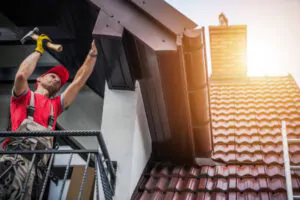
Your home is your shelter and refuge from the elements outside. Likewise, your home’s number one protection is its roof. If not provided with proper maintenance and care, it too can be damaged and eventually make your home unsafe. Roof damage starts from a small leak on the ceiling until it becomes a big disaster during a typhoon, leaving buckets of water everywhere.
Roof Experts South Shore MA will be at your doorsteps right away when you seek our assistance. We highly value the safety of your family and are here to respond to your need whenever and wherever you are in Quincy, MA and the surrounding area.
Inspecting your roof is the first step in performing roof maintenance. You’ll have to climb up the ladder and walk on the steep sides of your roof. Let us handle that for you and save yourself from the worries. We have highly-trained roofers to get that job done safely. Get your roof ready for snow and heavy rain today. Call us at 781-423-1439.



